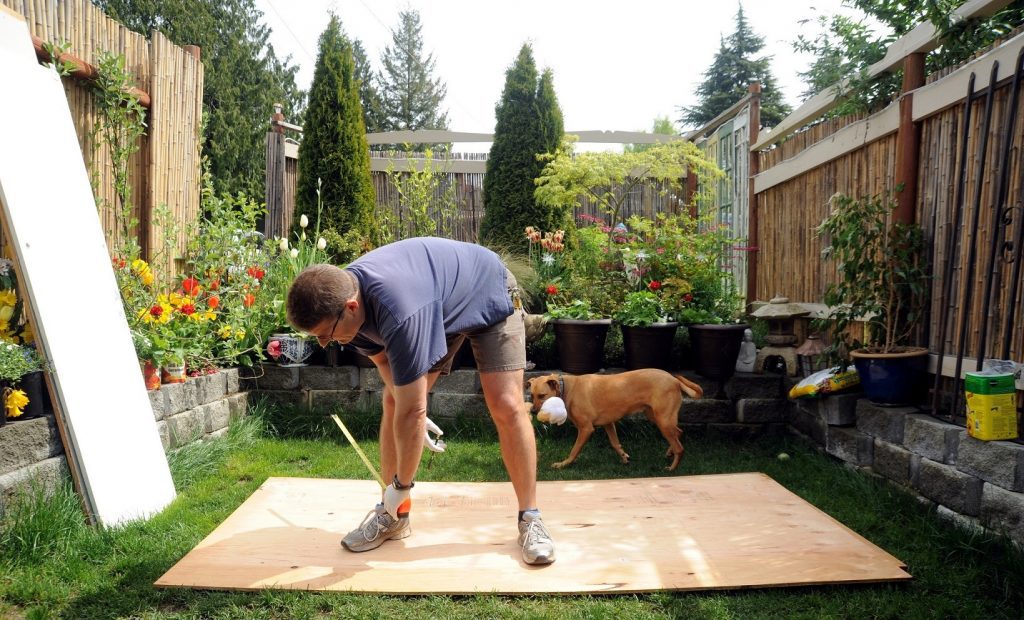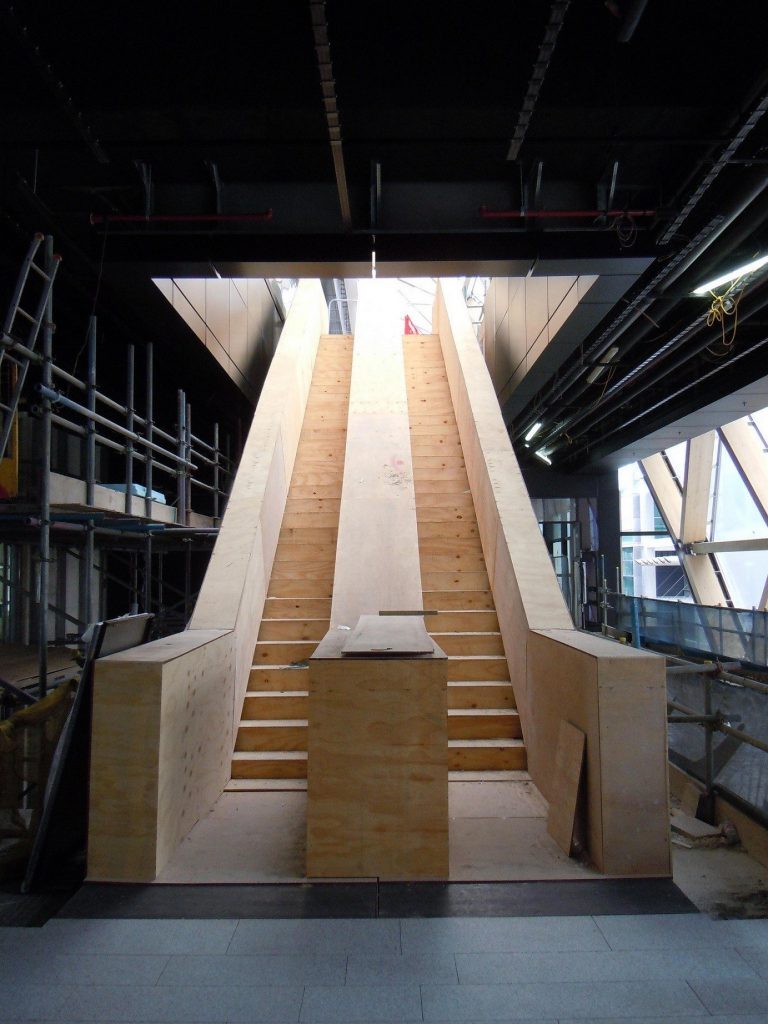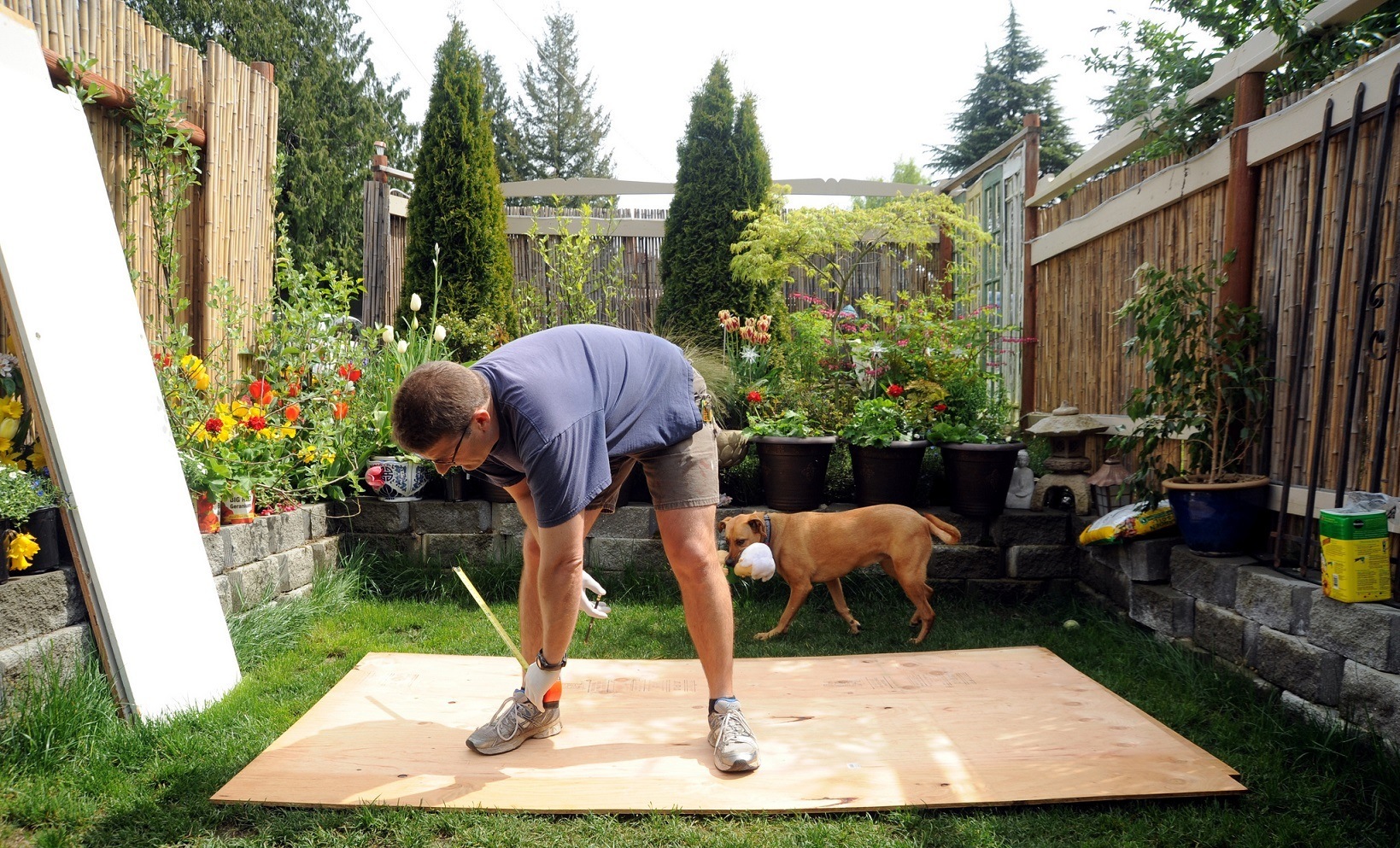Today’s average lumberyard or home improvement center carries many different types of plywood, giving you a wide selection. Businesses specializing in architectural trim for cabinetmakers and contractors will have even more choices, especially if you’re looking for hardwood plywood.
Of course, not all plywood is created equal, so you need to know what you’re looking for and the different types of plywood.
Many types of plywood, including a wide range of engineered wood products referred to as “plywood,” even though they aren’t made like traditional plywood. Of those made according to the traditional formula of thin veneers, laid crosswise to each other and bonded together, we can break plywood into two basic groups: hardwood and softwood plywood.
Generally speaking, softwood plywood is only used for construction, although many do-it-yourselves also use softwood plywood for painted wood projects, even furniture. Nevertheless, most softwood plywood doesn’t have a good enough appearance to be used for furniture projects because it is not finished for that; rather, it is provided with a finish that is intended to remain hidden in use.
Of these softwood plywoods, the most common variants in your local home improvement center are BCX, CCX, and CDX. We must understand their similarities and differences to understand which one we need for your project.
Understanding Plywood Nomenclature
Plywood is graded based on the surface finish. This grading scale is different for softwood plywood than hardwood plywood. Hardwood uses a number system, while softwood uses a letter system. Additional ratings may be added, covering how the plywood is manufactured and any specifications it has been manufactured to meet.
With softwood plywood, a three-letter code is used to define the grade. The first letter of the code talks about the face, or front side of the plywood, the second letter discusses the plywood’s back side and the third letter tells you whether the plywood is suitable for interior or exterior use.
- Grade “A” refers to the surface being sanded smooth and paintable. Some manufacturing repairs are acceptable, but they must leave the surface smooth and without defects
- Grade “B” provides a solid surface, with some repairs allowed. These are usually football-shaped pieces that have been pieced into the surface veneer. It may have tight knots, no missing wood, and up to 1 inch in diameter. Some small splits and discoloration are allowed.
- Grade “C” allows tight knots up to 1 1/2” and open knotholes up to 1”, along with splits and discoloration.
- Grade “D” is the lowest, with knots and knotholes up to 2 1/2″, along with some splits. No repairs will have been done to improve the quality of the surface veneer.
It should be clear that A and B-grade plywood will provide a much better finish veneer than C and D grades. This comes at a cost, though, as these higher grades of plywood are more expensive.
In the case of plywood ending in an “X,” such as ACX, BCX, and CCX plywood, the “X” stands for exterior grade adhesive. This means that an adhesive has been used in constructing the plywood, which can withstand moisture. The plywood has been treated to some extent to withstand getting wet, such as during construction. However, it is not pressure-treated wood or anything intended to last outdoors. The treatment the plywood receives is only enough to protect it during construction.
Softwood plywood may also be Marine grade or be rated as Water Boil Proof (WBP). This is a specification for a plywood sample made in the same way with the same materials, immersed in boiling water for an extended period without delaminating.
Marine grade ACX plywood is softwood plywood with an A-grade face and C-grade back, just like any other ACX plywood. The difference comes in the core of the plywood. With any marine-grade plywood, the veneers in the core must be without any voids. This is necessary for marine applications because voids allow moisture to collect, allowing delamination of the plywood to begin.
A and B-grade plywoods are typically suitable for finish material, while C and D are considered best for construction projects. It is unusual to find plywood graded the same on both sides, although it is not impossible. Nevertheless, plywood sheets generally have a face side and reverse or backside, with the face side being of a higher grade than the back.

BCX Plywood
BCX plywood has a handsome, well-sanded face and a less-finished backside. It typically contains C-grade inner layers and is bonded with exterior glue. BCX comes in a variety of thicknesses. The thickness of this plywood is normally measured in 32nds of an inch, with the standard sizes being 1/32” smaller than the nominal thickness. So, 3/8” plywood is 11/32” ½” plywood is 15/32”, 5/8” plywood is 19/32,” and ¾” plywood is 23/32”.
These utility panels are best for work buildings, farm construction projects, truck and boxcar linings, and similar projects. You can make painted projects out of them, especially in cases where only one side needs to be shown. They make an excellent base for the application of exterior coatings. You may find that these panels have been pressure treated, but if so, they will be specifically stated as such.
Is there an ACX Plywood?
ACX plywood is a variation on BCX. In many mills, BCX plywood is plywood that has been manufactured and then determined not to be good enough to be rated ACX. While both can be used in the same manner, the better face veneer of ACX plywood makes it ideal for visible exterior panels on a home. It uses the same rosin and surface treatment against moisture as BCX plywood, allowing you some time before painting the wood. However, the longer you wait to paint it, the more damage it will incur.
What is ULX Plywood?
ULX is a brand-specific name for BCX plywood sold by Lowe’s and possibly other outlets. While exterior grade plywood is not marine grade or pressure treated. Therefore, it is not impervious to moisture, decay, and termites. ULX plywood should always be treated with a wood preservative or painted in an outdoor application unless a waterproof layer, such as siding or roof shingles, cover it.
Generally speaking, this rating is used mostly for MDF and other engineered wood panels, which are not made according to the same method as traditional plywood panels, even though they are considered a plywood product.
CCX Plywood
CCX plywood is unusual and difficult to find. Nevertheless, it is a standard grade of plywood, often made with pressure-treated softwood. This type of plywood has more blemishes than BCX plywood, and the face and the back have the same characteristics. Like BCX, CCX plywood comes in various thicknesses, normally contains C-grade inner plies, and is bonded with exterior glue.
CCX Plywood is great for construction projects of all types, but keep in mind that the veneer will typically display lots of knots and other visual blemishes that detract from its appearance, and the sanding process has been through is less intensive than that which higher-grade plywood undergoes.
Often, when people are looking for CCX plywood, they are directed by the lumberyard to CDX plywood, which is the standard grade of plywood used for sheathing on homes. The difference between CCX and CDX is only on the back side, which is not normally visible in construction.
PTS Plywood
ACX or CDX plywood might be used in many construction projects for sheathing or underlayment. While this works fine, voids in the core layers of plywood can cause sponginess or premature delaminating of the wood, especially in cases where high floor loads are expected, or some flexibility in the floor is required.
The solution is to use a plywood product without voids. One option for this is to use marine-grade plywood. Another option is PTS plywood, which stands for plugged, touched, and sanded. This refers to how the plywood has been manufactured.
During that process, all knotholes are cut out, plugged, and then finished to match the surface and thickness of the remaining veneer layer. This extra effort provides a superior plywood product for underlayment, where you don’t have to worry about voids or unevenness in the sheets.
GC Plywood
If you need plywood that has greater resistance to moisture than normal exterior-grade plywood, you might want to consider GC plywood. This rating refers to plywood intended for actual “ground contact,” hence the name. GC plywood is always pressure treated, protecting it from rot and decay, making it truly impervious to the normal decay in wood that is in contact with the ground.
The protection applied to GC plywood also protects it from termites, making it ideal for backyard storage sheds, decks, and any other backyard construction that may have direct contact with the ground. While other wood left in contact with the ground will be attacked by termites, GC plywood will not.

Typically, GC plywood will be tinted due to the rosin used to pressure treat it. Different companies may tint it green or yellow, mostly as a part of their branding. Which one is best is mostly a matter of personal opinion.
Professional Recommendations for Use
BCX plywood is readily available, but CCX is not quite so much so. Both are suitable for exterior use. Be sure to consider appearance when deciding which of this plywood to use, selecting BCX when looks are more important. Both types of plywood can be painted. Remember that hardwood cannot be pressure treated, and look for pressure-treated softwood if extra durability is important to you. Finally, ensure that you choose the right thickness for your project to ensure it can stand up to the elements while performing as you need it to.




